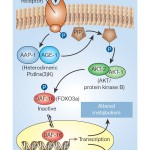By: Kate Good
As the world struggles to create “nature friendly” technology to compensate for our gas-guzzling vehicles and electricity needs, a major solution to global carbon increase has been overlooked. Collaborative research from forest scientists and over 13 universities suggests that the best way to combat global warming is by protecting indigenous lands
Deforestation of indigenous lands causes large amounts of carbon dioxide to be released into the atmosphere, by creating protected areas where the natural habitat is preserved, hundreds of thousands of tons of carbon dioxide will be prevented from entering into the global carbon cycle.
Described as a “win-win” situation, the protection of indigenous lands will slow forest loss, conserve biodiversity while simultaneously preserving local cultures.
Industry and urbanization does not only pose a threat to natural environments, but cultural ones as well. While this approach seems to be a step backward in the movement to create new “green” technology, logically it makes the most sense.
Research shows that all of the indigenous lands and protected areas (ILPAs) in the world contain more than 312 billion tons of carbon. It is projected that the protected areas founded between 2003 and 2007 could prevent over one-third of the world’s annual greenhouse gas emissions of carbon dioxide from being released by 2050.
In areas such as Brazil, indigenous lands account for approximately four times the area of already existing national and state protected lands, however, without protection, these lands face the direct threat of deforestation.

The expansion of industrial land as apposed to the establishment of protected natural areas is not only costly in the monetary sense but also environmentally. Rather than looking to assuage the damage caused by industrialization, efforts to protect and maintain indigenous lands holds a long-term benefit to the health of the environment.
Over the course of the December climate talks in Copenhage, developed countries agreed to financially support poor nations in protecting their forests from deforestation, however there is no governmental mechanism in existence to carry out these changes.
Sources:
http://www.nature.com/news/2010/100315/full/news.2010.123.html







